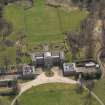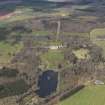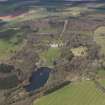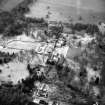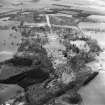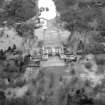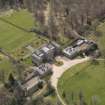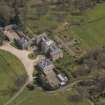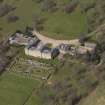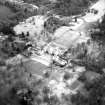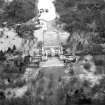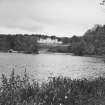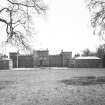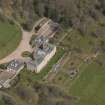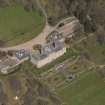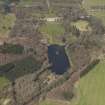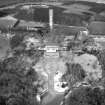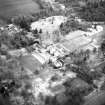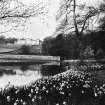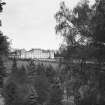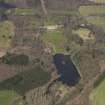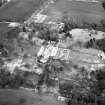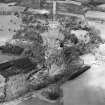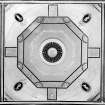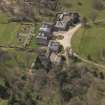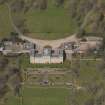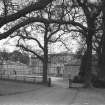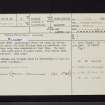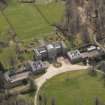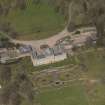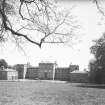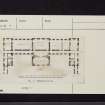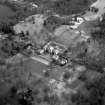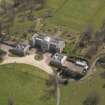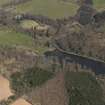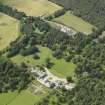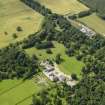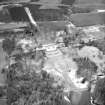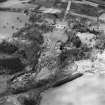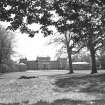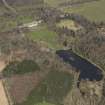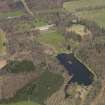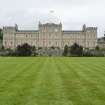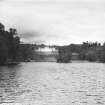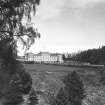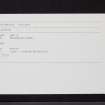Following the launch of trove.scot in February 2025 we are now planning the retiral of some of our webservices. Canmore will be switched off on 24th June 2025. Information about the closure can be found on the HES website: Retiral of HES web services | Historic Environment Scotland
Mellerstain House
Country House (18th Century)
Site Name Mellerstain House
Classification Country House (18th Century)
Alternative Name(s) Whitesyde; Mellerstain House Policies
Canmore ID 57171
Site Number NT63NW 18
NGR NT 64765 39095
Datum OSGB36 - NGR
Permalink http://canmore.org.uk/site/57171
- Council Scottish Borders, The
- Parish Earlston
- Former Region Borders
- Former District Ettrick And Lauderdale
- Former County Berwickshire
The lands of Mellerstain were granted by King Charles I to an Edinburgh burgess, George Baillie of Jerviswood, in 1642. It was his grandson, also named George Baillie, who commissioned the architect William Adam to design and build the existing house. Work began in 1725, but by the time George Baillie died in 1738, only the two wings had been completed. The central portion of the house remained unbuilt.
The estate passed to George Baillie's grandson, George Hamilton, second son of the Earl of Haddington, who changed his name to Baillie when he inherited Mellerstain. He commissioned William Adam's famous son, Robert, to complete the building of Mellerstain, which he did between 1770 and 1778.
Surviving drawings suggest that Robert Adam intended to modify the wings designed by his father, but this work was never carried out. The exterior was slightly altered at a later date, when the main entrance was rebuilt in the style of the William Adam wings.
The interior boasts some of Robert Adam's finest work. The library is particularly outstanding, and the plaster ceiling in this room is one of his masterpieces. The interior also includes marble busts by Roubiliac, one of which represents Lady Grisel Baillie.
Text prepared by RCAHMS as part of the Accessing Scotland's Past project
NT63NW 18.00 64765 39095
NT63NW 18.01 Centred NT 64787 39065 Garden
NT63NW 18.02 NT 64828 39454 East Lodge
NT63NW 18.03 NT 64233 39338 Mausoleum
NT63NW 18.04 NT 64554 39249 Norman Cottage (The Old Cottage)
NT63NW 18.05 Centred NT 64719 39101 Stables and Cottages
NT63NW 18.06 NT 64293 39079 West Lodge
NT63NW 18.07 Centred NT 64418 39274 Home Farm
See also:
NT63NE 14 NT 6523 3901 Mellerstain, Small Bridge
NT63NE 27 NT 65126 38141 Mellerstain Mill
(NT 6475 3909) Mellerstain House was begun by George Baillie about 1725 with William Adam as architect, but two wings only were completed at that time. The main block was built about 40 years later, with Robert Adam as architect. (See plan, fig.17).
C Cruft 1964.
(The stables and cottage block at Mellerstain is also an 'A' listed building.)
Information from OS recorder (IF) 23 February 1979.
Photographed by CUCAP (air photographs: GT 41-4, JU 32-8).
CUCAP AP Catalogue.
NT63NW 18.00 64765 39095 Mellerstain House
NT63NW 18.01 64787 39065 Garden
NT63NW 18.02 64828 39454 East Lodge
NT63NW 18.03 64233 39338 Mausoleum
NT63NW 18.04 64554 39249 Norman Cottage (Old Cottage)
NT63NW 18.05 64716 39097 Stables
NT63NW 18.06 64293 39079 West Lodge
NT63NW 18.07 64418 39274 Home Farm
NT63NE 14 Mellerstain, Small Bridge
NMRS REFERENCE:
Architect: William Adam 1725 James Runciman, wright 1729 -
Robert Adam 1770-78 Mr Bonnar, painter, 1776 and James Adamson, carver, 1776
Robert Smirke supplied plan of thatched icehouse, 1825
Sir Reginald Blomfield 1909 - terrace and garden
MELLERSTAIN REFERENCES:
Bundle 2 -
Hunamundas in 1727.
Jo: Mercer at work per day - 23 days £1. 5. 6 1/2
Canall ( ) 27 June 1727. Workmen £10. 10. 11
Bundle 7 - Estate Management
Copy from Mr Smirke August 14th 1825, Lowther Castle, of Ice house used in
America (thatched). Plan of an Ice House costing from £12-£15 which has
answered perfectly when one that has cost £20 or £30 had failed, includes
2 sections.
Mr Craw's plan for the Cascade at the bridge. 1748. Ink sketched and instructions.
List of leaden statues Figures and flower plots, to be sent from Popes to
Mellerstain with their several weights. 24 June 1740, include Mark Anthony,
Juno, Venus, Mercury, Faurus,
Raine, Four boys and flower pots.
Acct fortress came from Mr Boutcher, gardener in Edinb. for planting the
Orchard. March 5th 1733.
Verso - Plan of orchard.
Draught of the Inclosures West and North side of Mellerstain Hill done by
John Bowie 1731.
Estimate of a burial place in the Temple at Mellerstain.
Bundle 16 - Accounts
8 April 1773. Discharge Acct. Mr W Hamilton, Edinburgh, for Mahogany (New
House) £3. 1. 0 (rails, astragals, pannels). Wood extremely well seasoned and
fit for immediate use.
2 May 1778. Memorandum payment to Mr Bonnar. Work done. August 1771 - May 1778.
Current a/c with John Wauchope WS -
16 Oct 1776. John Bonnar, painter his acct.
27 Dec 1776. James Adamson, carver £20
23 Jan 1777. ' ' ' ' paid into his cash acct with the Royal Bank £500
4 Dec 1777. Cash paid Mr Bonnar, painter £40.
'Mellerstain Letters', bound volumes in library cupboard at Mellerstain, Volume IX 1724-29.
18 May 1725 from Wm Adam, sending George Baillie estimates for shell of house.
Interior fittings will depend on discussion with Baillie, who likes stucco
decoration. Discussess reduction of original design, as Baillie does not
want elaborate cornice. Suggests fitting upper storey into roof-space,
as he has just done in a wooden model prepared for Lord Aberdeen.
Describes a new type of imitation marble which he has learnt from a Swedish
inventor.
27 May 1726 from William Adam, agreeing to make floor of kitchen in E wing
lower, to allow 14 feet head space. Adjacent cellar will have 6' high
entressol above suitable for servant's lodgings while family are lodging in
the pavilion. Discusses Canal.
1729 Letters indicating that both pavilions are completed; trouble with
smoking chimney.
Page 59 - Mellerstain correspondence
29 May 1729 from James Runcimen to Lady Grizel Baillie about his progress in
building the stables at Mellerstain.
29 March 1731 from Lady Grizel Baillie did not like the stalls in the stables
and would like the next lot to be different.
1737-8 Letters from James Runciman.
Page 34 - January - March 1778 from Robert Adam concerned with modelling
figures. Will return the drawing of the gallery ornament. Have you got
another plasterer since you parted with Parvel (?). I am sorry he behaved
so ungratefully. Will send you drawings of ceilings of 2 rooms and 2
dressing rooms.
The bridge requires a little addtional information.
Mellerstain Muniments: Payments for work at Mellerstain 1776/7. Extracts in NMRS.
(Undated) information in NMRS.
Photographic Survey (1955)
Photographic survey of the exterior of the Hirsel, Berwickshire, by the Scottish National Buildings Record in 1955.
Photographic Survey (June 1961)
Photographic survey by the Scottish National Buildings Record/Ministry of Work in June 1961.
Publication Account (1985)
The estate ofMellerstain is mentioned as early as 1451-owned by the Haliburtons, later by the Haitlies. In 1642 it passed into the hands of the Baillies. George Baillie of Jerviswood was the son of a wealthy Edinburgh merchant and though the estates were forfeited in 1684 on account of the Covenanting zeal of his son Robert, they were restored in 1691. Robert's son George married Grizell Hume, renowned for her 'Household Book' in which, as mistress and manager of the household, she recorded what has survived as a unique social document of the time. They began the rebuilding ofMellerstain in 1725 to replace "ane old melancholick hous that had had great buildings about it" in 1639, and the two wings were completed to the design ofWilliam Adam.
The present house is largely the creation of the next George Baillie. After his Grand Tour of Europe in 1740-44, he returned fired with enthusiasm for truly classical dimension to Mellerstain, and in addition to commissioning Robert Adam he seems to have worked on many of the plans himself. The house exhibits a strong central projection to the north; it is contrastingly flat to the south where it overlooks the Italian-style terraced gardens laid out in 1909 by Sir Reginald Blomfield. It is one of the earlier 'Adam castles' seen by some as "rather lifeless and box-like".
If Hopetoun's interiors (no. 30) are amongst the most palatial and ornate of 18th century Scotland, those at Mellerstain are perhaps the most beautiful and refined-with particularly attractive ceilings and friezes in the library, music room and drawing room. The latter, decorated with griffins and vases, is dated 1778 and must be one of the last completed; the first, dated 1770, incorporates a circular oil-painting of Minerva, flanked by representations of 'Teaching' and 'Learning'. Preserved in the original colours they could be mistaken for pieces of Wedge wood porcelain! The ceiling in the Great Gallery, by contrast, was never completed-though the architect's drawings of 1775 along with the end colonnades, friezes, tracery and (plain) barrel roof give an idea at least of what might have been.
In 1717 the Baillies were linked in marriage to the Earls of Haddington. The etates remain linked and Mellerstain has become the residence of the heir to the earldom.
Information from 'Exploring Scotland's Heritage: Lothian and Borders', (1985).
Sbc Note
Visibility: This is an upstanding building.
Information from Scottish Borders Council.
























































